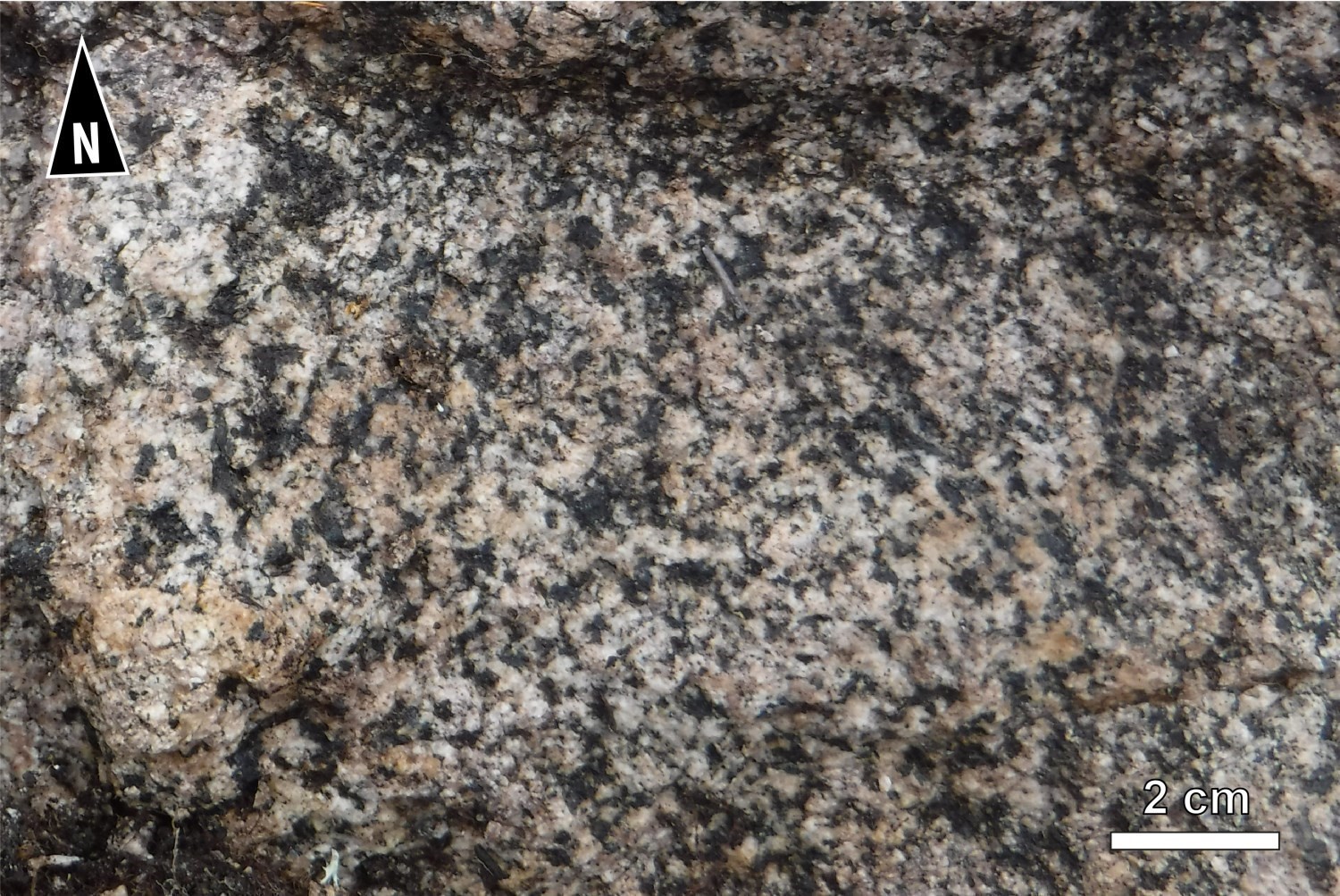
| Author: | Talla Takam et al., in preparation |
| Age: | Neoarchean |
| Reference section: | None |
| Type area: | Emmanuel Lake area (NTS sheet 33A) |
| Geological province: | Superior Province |
| Geological subdivision: | Opinaca Subprovince |
| Lithology: | Biotite-magnetite granite |
| Type: | Lithodemic |
| Rank: | Lithodeme |
| Status: | Formal |
| Use: | Active |
None
Background
The Ribera Pluton was introduced by Talla Takam et al. (in preparation) in the Emmanuel Lake (NTS sheet 33A09) and Léran Lake (sheet 23D12) areas to describe an elongated, highly magnetic granite intrusion along the Opinaca – Opatica contact. Previously, this pluton was part of the Misasque River massif described by Hocq (1985), a large felsic package of tonalite, granodiorite and granite.
Description
The Ribera Pluton mainly consists of massive granite, leucocratic, light grey-white in altered surface and pinkish grey-white in fresh exposure. It is medium to coarse grained and slightly foliated in places. The main minerals are quartz, plagioclase, microcline and magnetite. Quartz shows subgrains with undulatory extinction resulting from the effect of regional constraints. Microcline displays characteristic mesh polysynthetic twins and is observed in greater proportion than in other granites of the region. The rock is slightly sericitized and regularly shows myrmekite zones and perthitic or even antiperthitic textures in thin section. Biotite is rather scarce (0-3%) and partially to completely chloritized. The most common accessory minerals are epidote, sphene and apatite. To the west, the proportion of plagioclase increases with the appearance of hornblende, giving the rock a more granodioritic composition.
Thickness and Distribution
The Ribera Pluto extends E-W for ~50 km and has a maximum width of 10 km. Located between paragneiss and migmatites of the Laguiche Complex (nAlgi) to the north and foliated tonalites of the Misasque Complex (Amiq) to the south, it follows the Opinaca – Opatica contact in sheets 33A09 and 23D12.
Dating
None.
Stratigraphic Relationship(s)
The Ribera Pluton is late tectonic and was emplaced after the Laguiche and Misasque complexes. However, contacts between these units were not observed on outcrops.
Paleontology
Does not apply.
References
| Author(s) | Title | Year of Publication | Hyperlink (EXAMINE or Other) |
|---|---|---|---|
| HOCQ, M. | Géologie de la région des lacs Campan et Cadieux, territoire-du-Nouveau-Québec. Ministère de l’Énergie et des Ressources, Québec; ET 83-05, 188 pages, 4 cartes. | 1985 | ET 83-05 |
| TALLA TAKAM, F. – BEAUCHAMP, A.-B. – MASSEI, F. | Géologie de la région des lacs Emmanuel et Léran, Ministère de l’Énergie et des Ressources naturelles, Québec. | In preparation | – |




